Beauty for
ages
ages
Our History
Over its 150 year history, Shiseido has inspired through creativity, innovation, and pioneering leadership in the fields of beauty and skincare. Explore the journey of Shiseido, from its humble origins as Japan’s first Western-style pharmacy, with some of the milestones that helped Shiseido grow to become the leader in Japanese beauty that it renowned for today.
1872
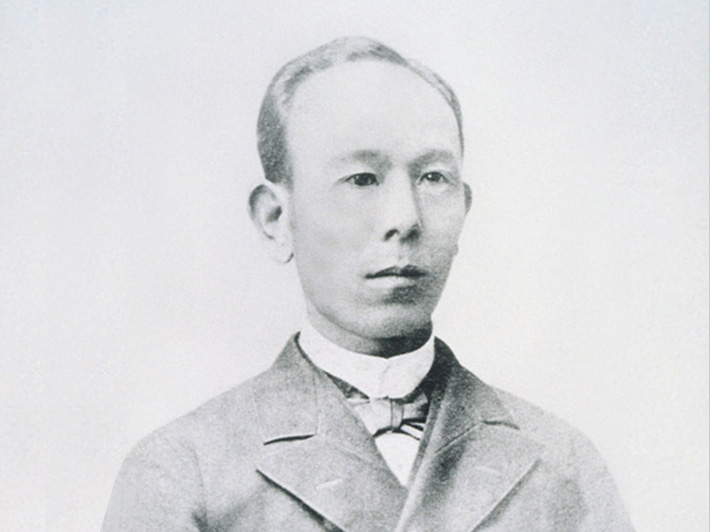
Arinobu Fukuhara establishes Japan's first private Western-style pharmacy in Ginza, Tokyo
Arinobu Fukuhara, the son of a traditional Eastern herbal medicine doctor, was born in 1848 in Awa, Japan— many miles from the sophistication of Tokyo, and many years before most Japanese people even imagined incorporating Western lifestyle elements in with their own. Arinobu was educated in Western medicine and trained as a pharmacist, and his successful military career led to his becoming Chief Pharmacist of the Japanese Navy. After his service, Arinobu launched what would turn out to be a visionary entrepreneurial venture—opening Japan’s first Western-style pharmacy. The location Arinobu chose was right in Tokyo’s stylish Ginza district, which had become a chic East-West cultural crossroads.
This avant-garde pharmacy, which was largely research and development oriented, grew to become one of Japan’s largest and most influential companies.
Arinobu became a pioneer in bringing Eastern and Western ideas together, just as Japanese people were ready to experience a more worldly way of living. Shiseido may have transitioned from pharmaceuticals to cosmetics, but Arinobu’s philosophy of combining Eastern aesthetics with Western science to bring new values to customers’ lives is still the underlying concept for virtually everything Shiseido does.
1888

Shiseido releases Fukuhara Sanitary Toothpaste: The First Toothpaste in Japan
Shiseido founder Arinobu Fukuhara’s experience in the Navy gave him firsthand understanding of what was wrong with the tooth cleansing powder available in the 1800s. Made of burnt salt and limestone, these crude powders not only tasted awful, but on the high seas, it was also difficult to keep them from spilling. So Arinobu was interested in developing a better product for use as a dental cleanser.
In 1888, Shiseido introduced toothpaste in cake form to Japan. For the first time, Japanese people had a better tasting, better smelling, more convenient way to clean their teeth, by rubbing the cake of dentifrice with a wet toothbrush to transfer the paste to the bristles. Though relatively expensive, Fukuhara Sanitary Toothpaste was an immediate success, and competitors rushed into the market, but the name of Shiseido’s product entered the Japanese lexicon, becoming the basis of the word for toothpaste.
1897

Shiseido advances into cosmetics industry with Eudermine: A Rosy Beginning for Shiseido’s Beauty Business
The cosmetics commonly available during Japan’s Taisho era were typically medicinal looking and smelling concoctions sold in dark bottles. In 1897, Shiseido broke this mold with Euderimine— a name derived from the Greek words for “good” (eu) and “Skin” (derma.) Eudermine offered customers a ruby-red skin-softening lotion so effective, it’s still sold today albeit in an advanced formulation, and still beloved by women of all ages. Its bottle changed the future of cosmetics packaging— evolving the Japanese apothecary look to a stylishly feminine bottle design with eight cut facets at the shoulders, a flower-emblazoned label, and a sweet red bow around the bottle’s neck.
1902

Shiseido installs in-store soda fountains, begins Japan's first sales of soda waters and ice cream: An Early Taste of East Meets West Success
Cosmetics weren’t the only non-pharmaceutical items available from the Shiseido Pharmacy in Tokyo’s Ginza District. In 1902, Arinobu Fukuhara commissioned Japan’s first soda fountain from a U.S. manufacturer, and had it installed behind the counter. He even imported American ice cream dishes, glasses and straws for the ice cream the pharmacy made and the ice cream sodas they sold—all of which were still rare treats in Japan at the time. The soda fountain and ice cream were so popular, they were even mentioned in novels and publications of the era, with well-known writer Kafu Nagai noting that “once you have eaten Shiseido’s ice cream, it is impossible to eat any other.”
1915

Sets “Hanatsubaki” (Camellia)as a company trademark. Our logo: Sprouted from Flowers in a Woman’s Hair
“The ideal hair oil for the new generation” is how Shiseido advertised Hanatsubaki, the product created to hold Japanese women’s hair into the new Western-style chignons that became popular in the early 20th century. Named after the camellia, Hanatsubaki contained pure camellia oil as its main ingredient. The product’s popularity inspired the design of Shiseido’s corporate logo, the Hanatsubaki mark, which still represents Shiseido today.
Shiseido’s familiar Hanatsubaki or camellia mark wasn’t always the trademark logo for Shiseido. As a pharmacy, Shiseido’s identity was represented by a graphic image of a brave hawk, a symbol of Shiseido’s bold decision to begin a Western-style pharmacy in Japan. But as Shiseido transitioned into cosmetics, its logo needed a change, too.
President Shinzo Fukuhara, a trained photographer and creative Renaissance man, sketched the idea for the Hanatsubaki mark from a camellia in a glass of water. Unlike trademarks that were common in Japan at the time, the camellia logo had a definite Western look, with an art nouveau sensibility. Shinzo Fukuhara’s design has remained practically unchanged since he designed it, and it still looks as fresh as it did on its first Shiseido package.
1916

The Buildings of a Business: Expansion Under Shinzo - Shiseido opens design department and testing room.
In 1916, a year after Shinzo Fukuhara, Arinobu’s son, took over Shiseido, he began creating cosmetics, and established a cosmetics department independent of the original pharmacy with the soda fountain. He opened a retail cosmetics store in a separate location on the block next to the existing building. The three-story brick building sat on a corner facing a large avenue, with the store on the first floor, cosmetics production on the second, and the Advertising Creation Department and the Testing Room on the third. The Advertising Creation Department created Shiseido’s posters, newspaper and magazine advertisements, package designs and store layouts. In the Testing Room, staff members developed new products and improved ready-made goods. It later became a laboratory, which was expanded into a chemical research institute. It ultimately developed into what is now the Shiseido Research Center. This building characterized Shinzo’s belief in the importance of expanding Shiseido’s strength equally in both art and science.
1917
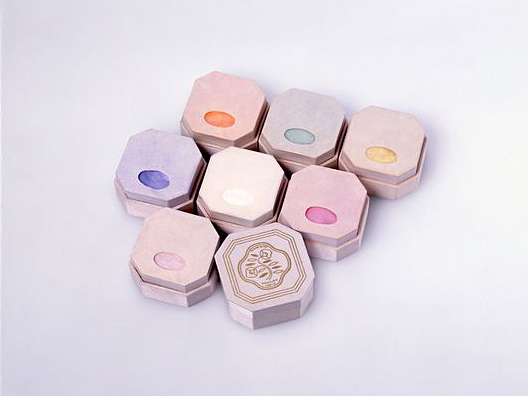
Bringing Color to Japanese Life: Releases Seven colors Face Powder.
Shiseido introduced Rainbow Face Powder in 1917, at a time when Japanese women had almost never worn anything but white face powder. The idea of a face powder with seven colors was revolutionary, when many still felt that the ideal complexion was that of a porcelain doll.
The product was based on the breakthrough idea of applying face powder using seven colors, including white, yellow, flesh, rose, peony, green and purple to match each person’s skin tone.
The container was octagonal, with the front covered by white satin to provide a lavish, upscale design. Original and bold, the product gave fashionable women a chance to break free of the classic Japanese kimono look. At the same time, the powder was reputed to have become popular among the geisha of the time as a means of “projecting an appealing image under the lights.”
1919

Establishes the Shiseido Gallery, now the oldest existing gallery in Japan.
The Shiseido Gallery opened in 1919 as a space to exhibit Shiseido’s seasonal merchandise, such as scarves and fans. But Shinzo Fukuhara’s passion for creativity soon inspired him to invite young avant-garde artists to show their work in the space. The first show featured watercolors by Riichiro Kawashima, one of Shiseido’s own staff creative artists. His work was so impressive, the show received front page coverage by the Tokyo Asahi Shimbun Newspaper.
Nearly a century after its opening, the Shiseido Gallery is the oldest non-profit gallery in Japan. It has welcomed countless visitors to thousands of shows, and stands as a reminder of Shiseido’s creative roots, and the value Shiseido places on enriching peoples’ lives through the arts.
1922

Making the Cut: Shiseido Enters the World of Hairstyling
The Shiseido Gallery opened in 1919 as a space to exhibit Shiseido’s seasonal merchandise, such as This young woman sports the trendy mimikakushi, literally “covering-the-ears,” hairstyle of the 1920s. As this fashion forward hairdo gained popularity in the United States, Shinzo Fukuhara brought an American hairstylist known for her talent with this style to work at Shiseido’s Hair Styling Salon, which he opened in 1922. Helen Grossman gave countless Japanese women the mimikakushi look, which soon became a classic. Until this time, Japanese hairstyles had been relatively unaffected by world trends.

Launches Shiseido Geppo cultural information magazine for customers (through 1931)
Long before Japan’s first fashion magazine was ever published, Shiseido created a magazine called Shiseido Geppo, which later evolved into our Hanatsubaki magazine, which continues to be considered a top source of beauty, fashion, art and cultural trend news to this day. The premiere issue of Shiseido Geppo in 1924 featured a section called “The Paris Report,” detailing the new style of dresses with slits in the lower half, and the phenomenon of more women wearing their hair bobbed, making it difficult to distinguish them from men.
Other articles were equally newsworthy, disseminating information such as “How to Treat Pimples, for the Inexperienced,” “How to Keep Fit to Maintain Health and Youthfulness,” “This Year’s Ladies’ Glove Fashion,” “The Story of Wireless Telephone” (and they meant radios, not cell phones), and “How to Brew Delicious Coffee.”
1927
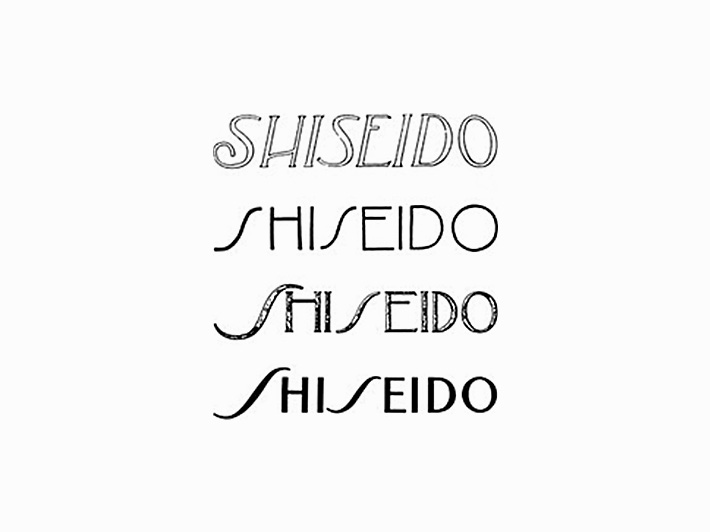
A Beauty Treatment for the Name Shiseido: Creates logo in Japanese and Western characters
After creating the Hanatsubaki mark, Shinzo asked the Adverting Creation Department to come up with an original font for the name Shiseido. In 1923, this was a pioneering example of corporate identity in Japan.
The distinctive letter S indicates the influence of art nouveau, a major design trend during the period when Shinzo visited Europe.
This logotype was restyled in 1927, slightly modified in 1974 and adjusted again in 2010, but it remains conceptually unchanged since the 1927 version—a testament to the classic taste and time-tested talent of the art department Shinzo Fukuhara assembled, managed and inspired.
1934
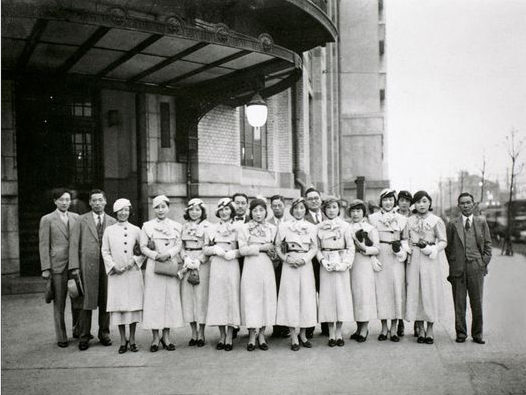
Miss Shiseido Promotional Campaign Begins: “Women From Respectable Families Wanted...”
This line began the 1933 ad created to recruit the nine women who would be called “Miss Shiseido.” These women received seven months of training in beauty techniques, makeup science, dermatology, physiology, public speaking, dress, fashion, singing, Western art and manners. They performed first in a show called “Theatre of Modern Beauty,” a combination beauty lesson and musical/variety program which was widely successful all over Japan. Ise Shimbun Newspaper reported that “theatres were filled with young women of marriageable age and up unpretentious wives,” and that during the show, audience members often exclaimed “Oh, how beautiful!”
After the performance, the nine women quickly changed into their uniforms, and provided beauty consulting to members of the audience who requested it. This was the ultimate point of the program—to introduce individualized beauty techniques to each customer.
1937
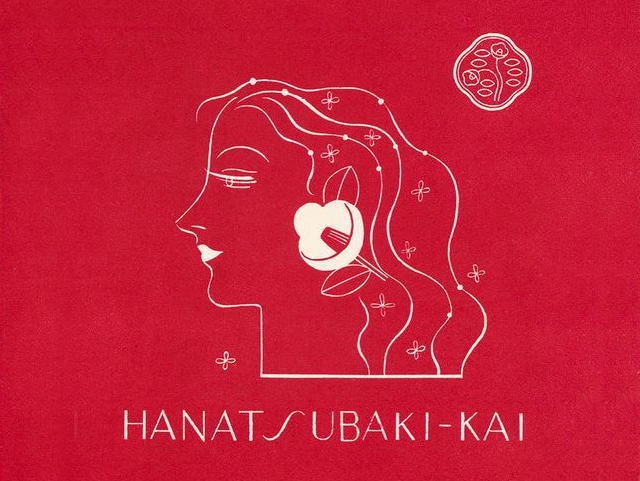
Inaugurates the Camellia Club and commemorative gifts (through 2003)
Started in 1937, The Camellia Club’s membership consisted of women who were regular users of Shiseido cosmetics. Their charter was to “share Shiseido beauty techniques and to cultivate the charm of the modern woman.”
Camellia Club Parties were held nationwide to introduce and practice new beauty regimens and exercises. Sometimes musicians would perform concerts at these parties, too. Each gathering attracted throngs of women who were enthusiastic about beauty. These women also became regulars at stores that sold Shiseido.
Membership came with a subscription to a beauty and fashion publication called Hanatsubaki magazine, and invitations to beauty events and lectures held throughout Japan. Members also received coupons for Shiseido products, and when they purchased a certain amount within a year, they earned commemorative gifts featuring the iconic camellia, created by well known artists and craftspeople of the time. An enameled obi clip, a lacquered hand mirror and a handbag are a few of these items, which were cherished by their recipients for decades, and are now highly valuable collectibles.

Hanatsubaki replaces Shiseido Graph
In 1937, Shiseido launched the glossy, tabloid-sized magazine, Hanatsubaki. Members of Shiseido’s newly formed Camellia Club received complimentary subscriptions to the publication, and each issue was packed with up-to-the-minute fashion, beauty and lifestyle information from Japan and overseas, helping women develop their personal style as the aesthetics of East and West continued to blend.
For example, in the June, 1939 issue, writer Chiyoko Tazawa reported that “The women of Paris favor black clothing with collars that can be changed. They adorn their clothing with flowers and a range of other decorative devices. This is economical and beautiful. It is hard to say that this would harmonize with Japanese clothing—the haori, kimono and obi. Western clothing is probably more easily combined with other items.”
Hanatsubaki is still published today, and is still in high demand for its credible beauty information, beautifully designed layouts and fashion-forward content.
1939

The Shiseido Research & Development Lab is completed
Shiseido’s original “Testing Room” was established on the third floor of the Shiseido Cosmetics Department in November 1916. This developed into a Research Room, and then a Research Department. Then in September of 1939, the almost 400 sqare-meter Shiseido Chemical Research Center was completed. The research staff included a total of 23 researchers led by Mitsuo Iyoda, who would later become Shiseido’s third president.
On March 10, 1945, the entire research center was lost in the fire of the Great Tokyo Air Raids, and didn’t reopen until August of 1948. Upon reopening, the Center was led by Dr. Tessaku Ikeda, who is hailed as having developed cosmetics manufacturing to a more modern scientific level.
In 1957, the center expanded again, as the 1960s brought a favorable environment for the cosmetics industry. To stay ahead of the scientific needs that were emerging, Shiseido built a new research facility, the Shiseido Research Center (Shin-Yokohama). Completed in 1968, its purpose was to perform basic research that was not limited to products, opening up new possibilities while The Tokyo Research facility remained dedicated to applied and developmental research.
The addition of the second Research Wing was completed in Yokohama five years later, and Shiseido Research Center (Kanagawa Hakkei) was completed in Yokohama in July of 1992. With close to 600 researchers and staff members, Shiseido proudly operates one of the largest, most advanced research facilities in the world, and has produced and some of the industry’s most revolutionary cosmetics technologies.
1957

Begins sales in Taiwan - first office outside Japan
The first Shiseido office to open outside of Japan was in Taiwan in 1957. Next, a subsidiary in Hawaii was created in 1962. Continuing eastward, the United States office became operational in 1965, and Italy opened in 1968.
After establishing these bases around the globe, Shiseido finally entered France, the center of the cosmetics universe, in 1980. A year later, sales in China began, through a new Shiseido office in Beijing. This expansion was the realization of Shiseido’s long-held goals of globalization. Arinobu Fukuhara’s early vision inspired the company’s expansion into the Asia Pacific area, Europe, the United States, and China. Today, Shiseido operates in 85 countries and regions (including Japan, of course.)
1961
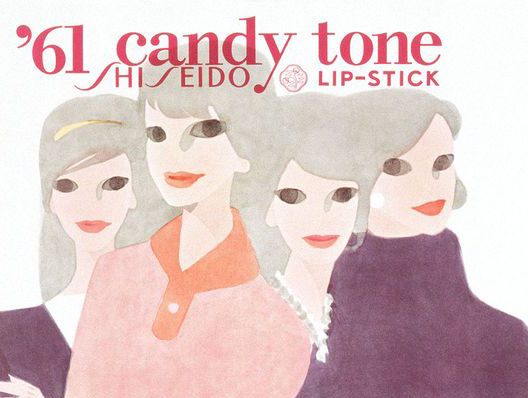
Conducts its first make-up campaign “Candy Tone”
In 1961, trends were still created by fashion industry insiders, and with the Japanese economy in good shape, Japanese women were ready to follow the fashion. The Japanese Fashion Color Association announced bright, sunny colors as the latest lipstick style, so Shiseido followed suit by creating its first seasonal promotion: The Candy Tone Makeup Sale.
With four colors designed to evoke the bright, sunny feeling of summer, the Candy Tone line included Sugar Pink, Candy Pink, Carrot Orange an Almond Brown. The successful promotion was repeated the following year, and was followed by a succession of themed seasonal campaigns, including Fruit Colors, Makeup Tokyo and Cherry Pink.
1966

Conducts “Beloved by the Sun” campaign and the advertising industry's first overseas shoot in Hawaii
In the 1960s, the summer season signaled a return to hot, sweaty days, and downturn in cosmetic sales, as people worried that the weather would cause their makeup to come off. In 1965, Shiseido launched a campaign featuring Sun Oil, and the following summer’s campaign took the theme of “Beloved by the Sun.”
Advertisements romanticized the look of healthy, tanned skin, and model Beverly Maeda gave the campaign attention-grabbing appeal. This was the first Japanese ad campaign ever to be shot overseas in Hawaii. The posters were routinely stolen from stores, and Beverly Maeda became a superstar overnight.
Before 1960, women didn’t have any specific foundation products for summertime use. They would apply stick-type or cream foundation, and add a dusting of powder on top to finish. But the sun would melt the makeup, resulting in an unappealing, runny look, not to mention exposure to the sun which caused freckles and spots.
This inspired Shiseido to develop a new cake-type summer foundation. Applied with a damp sponge, it was a fresh, cool feeling on a hot summer day. A few years later, when tan skin became fashionable, Beauty Cake was still a top selling summer item—in darker olive tones. Making summer makeup so much easier to wear, Beauty Cake marked a turning point in the history of foundation.
1973
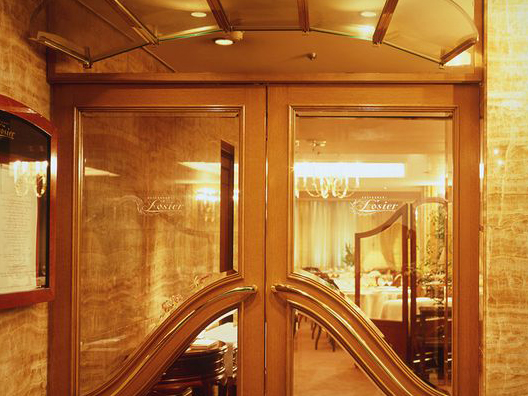
Opens L’Osier: Bringing the Beauty of French Cuisine to Ginza
In 1973, Shiseido opened a new restaurant called L’Osier. The idea was to bring a modern sense of the beauty of French culture to Japan through the experience of French-style dining. Run by chef Einosuke Takaishi until 1986, by Chef Jacques Borie until 1995, which brought his unique touch of French classic cuisine, and subsequently under the leadership of Chef Bruno Menard, L’Osier has brought the essence of the contemporary French dining experience to downtown Tokyo.
Awarded Michelin’s three-star rating for three consecutive years, the restaurant has been recognized around the world as one of the few authentic French restaurants outside of France. A visit to L’Osier’s website is like a visit to a French restaurant kitchen. The restaurant is currently closed, but when it reopens, the kitchen will resume preparation of authentic French dishes with L’Osier’s own special touches.
1975

Opens “The Ginza” - Another Expression of Shiseido’s Style
In March 1975, Shiseido opened a fashion building called “The Ginza” right on the site where the first president of Shiseido, Shinzo Fukuhara, opened a cosmetic store and later added a gallery, a hair salon and a children’s clothing store years ago.
The Shiseido Kyodo Building was designed by Ashihara Architect & Associates, housing Shiseido’s fashion boutique “The Ginza,” as well as a hair salon and several other boutiques. The building offered Shiseido a way to further expand the possibilities for beauty in the fashion mecca of Ginza, and to respond to the heightened interest in fashion that cosmetics customers were experiencing.
At “The Ginza,” Shiseido sold cosmetics, clothing and accessories, with the theme of a stylish, imaginative, and modern way of life grounded in value. In fact, “The Ginza” called itself the “store where the products have stories.”
For the building’s opening, “The Ginza” exhibited quilts from the collection of Jonathan Holstein, a noted American quilt collector. “The Ginza” continued to offer display space, and even opened an additional gallery space called Art Space, where displays of all types of art, particularly avant garde shows, made the venue something of a subculture mecca.
1978
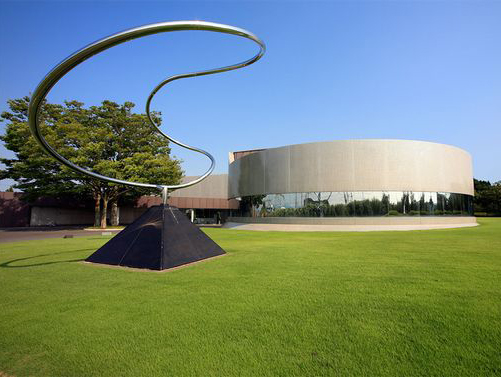
Opens Shiseido Art House in Kakegawa
In 1978, the two-story ferroconcrete building housing the Shiseido Art House opened in Kakegawa, Shizuoka. This building houses Shiseido’s art collection, and presents themes to the public through a variety of exhibitions. A renovation in 2002 allowed the museum to amass an excellent collection of modern and contemporary art works, which it regularly shows in public exhibitions. The core of the Art House’s collection consists of works by painters, sculptors and craftspeople who have previously exhibited at the Shiseido Gallery in Ginza, Tokyo.
Designed by architects Takamiya Shinsuke and Taniguchi Yoshio, who also designed the MOMA in New York, the building won the AIJ Prize from the Architectural Institute of Japan in 1980. The building was recognized again in 2010 with the Japan Institute of Architects’ 9th JIA 25th Year Prize, acknowledging the structure’s beauty as well as its “contribution to the local environment over time, longevity of aesthetics against weathering, and conveyance of the significance of architecture to society.”
The Shiseido Art House attracts many visitors each year, bringing art and culture to an enthusiastic public through contemporary art, theatrical productions and dance performances.
1980

Shiseido brings on Serge Lutens as image creator
When Shiseido entered the French marketplace and presented its new promotional poster to a French department store, the response was not exactly what Shiseido had hoped for. “This is just a product photo and a model shot,” they said. “Where is the Shiseido brand image?”
This kind of graphic communication was a new concept for Shiseido—one that prompted the company to hire the French art director Serge Lutens as an image creator. Coming from a fashion editorial background including Vogue and Elle, he was well known and widely admired as a trendsetter. With ideas about how to set Shiseido apart visually, it was he who approached Shiseido about developing a visual representation of the point at which East and West meet.
1984

The Hyaluronic Acid Phenomenon: Shiseido Made It Happen
Hyaluronic acid’s moisturiizng effect on the skin is now commonly known. But hyaluronic acid itself is not commonly found in nature, and until 1983 it was sourced mainly from roosters’ combs. Shiseido was the first to achieve large-scale production of this vital ingredient, through a fermentation process that uses the microorganism streptococcus zooepidemicus. This industrial production system allows Shiseido to supply hyaluronic acid to buyers around the world.
In 1997, Shiseido successfully manipulated the molecular structure of hyaluronic acid to achieve both hydrophilic and hydrophobic properties. This greatly amplified both its moisturizing effectiveness and its affinity to the skin. With these enhanced skincare properties, Super Bio-Hyaluronic Acid adds to the performance of many Shiseido products.
1986
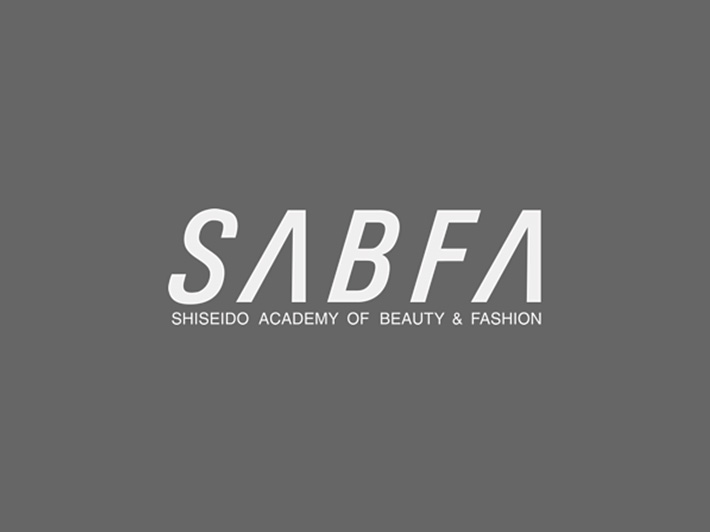
Opens the Shiseido Academy of Beauty & Fashion
Shiseido’s Gotanda Building, near Tokyo’s Shibuya area, was built in 1985. Its purpose: to promote the possibilities of enhancing health and quality of life through mental, physical and behavioral processes. This building originally housed Shiseido’s Beauty Science Research Center, and in 1986 the Shiseido Academy of Beauty and Fashion (SABFA) was established in the same building, to train professional beauty artists and aestheticians. SABFA offered modern classrooms and demonstration rooms with cutting edge AV materials and beauty equipment. Lecturers were invited from a number of fields, including fashion, color trends and even acupuncture, offering students an extremely well-rounded curriculum.
In its first year, SABFA created a “Beauty Fashion Department,” where hair and makeup stylists could take a basic course, advanced course and a salon makeup course. Later an “Aestherapy Department” began offering training for skin professionals through a facial course and body course. Graduates of SABFA are now highly sought-after professionals. Some have remained to teach at SABFA, which has earned an elite reputation among training academies worldwide.
1997

Eudermine’s World Debut, at Age 100
Although Eudermine’s formula has been improved with scientific advances and its package has undergone numerous redesigns, it has been a longtime favorite product since its introduction more than a century ago.
To celebrate Eudermine’s 100th anniversary in 1997, Shiseido took its beloved red lotion global, offering Shiseido customers all over the world the experience of Shiseido’s original and lasting beauty aesthetic. For this global launch and Japanese relaunch, Shiseido engaged the creative mind of Serge Lutens once again. Because of his familiarity with the essence of Shiseido’s character as a Japanese brand with a burgeoning global presence, Lutens had the ideal point of view for creating a new, modern bottle for Eudermine, with visual references to the product’s long history and origins.
The sleek, almost architectural-looking bottle in ruby glass evokes a sense of advancement and international style, while the perfect round, red stopper gives a nod to the Japanese flag. Its label typography presents each letter in the word Eudermine as a mirror image - as if one half of each letter is looking back, and the other half is looking ahead.
2002
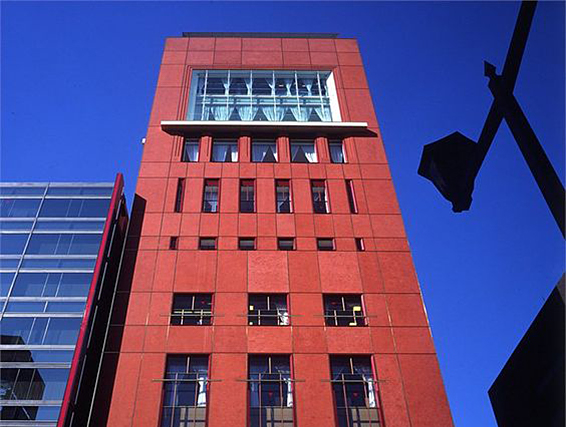
Establishes Tokyo Ginza Shiseido Building
Shiseido’s soda fountain, which was imported from the United States and installed in the Shiseido Pharmacy in 1902, became so popular, it was expanded into a building of its own. In July of 1928, the original “Shiseido Ice Cream Parlour” was completed. Designed by Kenjiro Maeda, the reinforced concrete building was two stories tall and had a vaulted ceiling in the middle. The luxurious interior even had an orchestra box, where live musicians played. The ambiance of the Parlour was fun and lighthearted, and quite unlike that of any other establishment in Japan.
After the Ice Cream Parlour suffered devastating damage in the Great Kanto Earthquake of 1923, it was reopened as a high-end restaurant serving curry rice, roast beef, and meat croquettes, that were a Western-style creation that immediately became Shiseido’s specialty.
The original Shiseido Parlour Building was demolished in March of 2001, and the current Tokyo Ginza Shiseido Building, designed by Ricardo Bofill, was built on the site, to house Shiseido Parlour as well as other Shiseido ventures.
2011

Establishes Tokyo Ginza Shiseido Building
Standing on the site of Shiseido’s original Cosmetics Division, which first opened in 1916, is Shiseido The Ginza, a breath of fresh air on Ginza’s main street, Chuo Avenue. Opened in 2011, the store represents Shiseido’s beauty heritage from two perspectives: by offering a range of Shiseido’s existing products, and by offering insights into progressive new developments in the field of cosmetics. The store offers customers the opportunity to interact with staff who are as expert in Omotenashi— the Japanese art of making a person feel welcome—as they are in the latest cutting-edge beauty and information technologies, like Shiseido’s “Mirai” virtual makeup simulator. This state-of-the-art color testing mirror shows visitors exactly how makeup colors will look on—without the need to even touch a tester. Just scan the product’s bar code, enter the simulator and see yourself wearing the makeup, without ever having to remove it.
Each of the store’s three floors invites customers to walk through an entry gate into a completely separate world, based on their individual needs and goals, and the facility as a whole allows customers access to all of the Shiseido Group resources. This includes a cosmetics shop, skincare counseling services, a hair and makeup styling salon, and a fully equipped professional photography studio. The design of the building itself is an architectural iteration of Shiseido’s essential characteristics of richness, human science and Omotenashi, integrated with references to Japanese pop culture. After experiencing all this, you may want to take a break at the Shiseido Parlour next door for a calming cup of tea.

